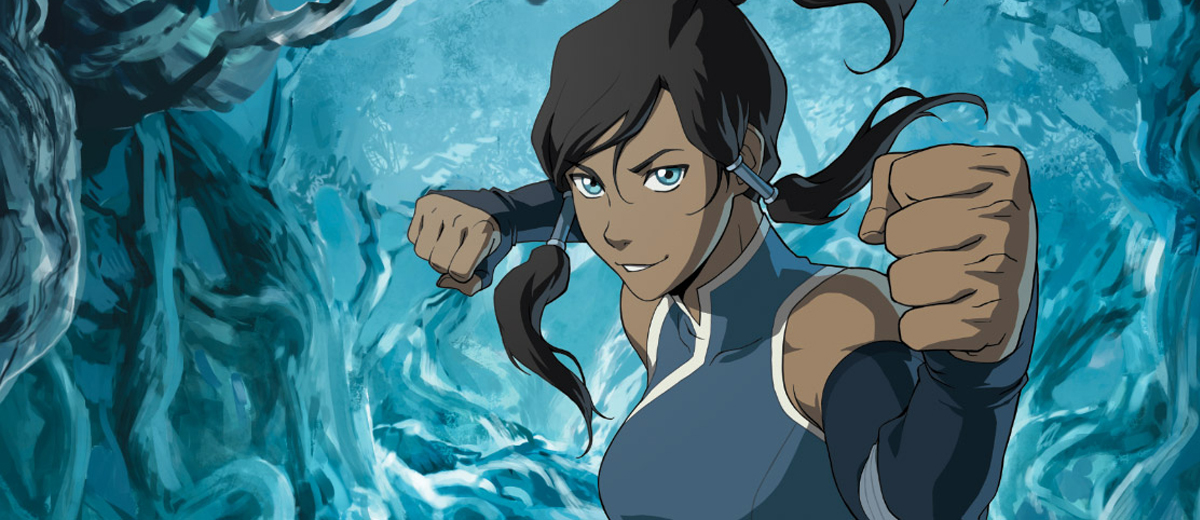
 The Legend of Korra takes place between the second and third season of the popular animated television series. Korra is a bender – a special kind of person who can manipulate the elements of water, earth fire or air. Korra is an avatar, a person who can bend all four of the elements, and is thus responsible for maintaining balance in the world.
The Legend of Korra takes place between the second and third season of the popular animated television series. Korra is a bender – a special kind of person who can manipulate the elements of water, earth fire or air. Korra is an avatar, a person who can bend all four of the elements, and is thus responsible for maintaining balance in the world.
The game picks up with Korra being opposed by what’s known as a “chi-blocker”, who strips Korra of her bending abilities (conveniently providing her with a void to fill with powers as the game progresses). Following events of the second season, Korra herself unwittingly unleashed Hundun into the real world from the spirit world. An ancient evil, Hundun must be stopped before he spreads chaos throughout the world, and banished back to his spirit realm.
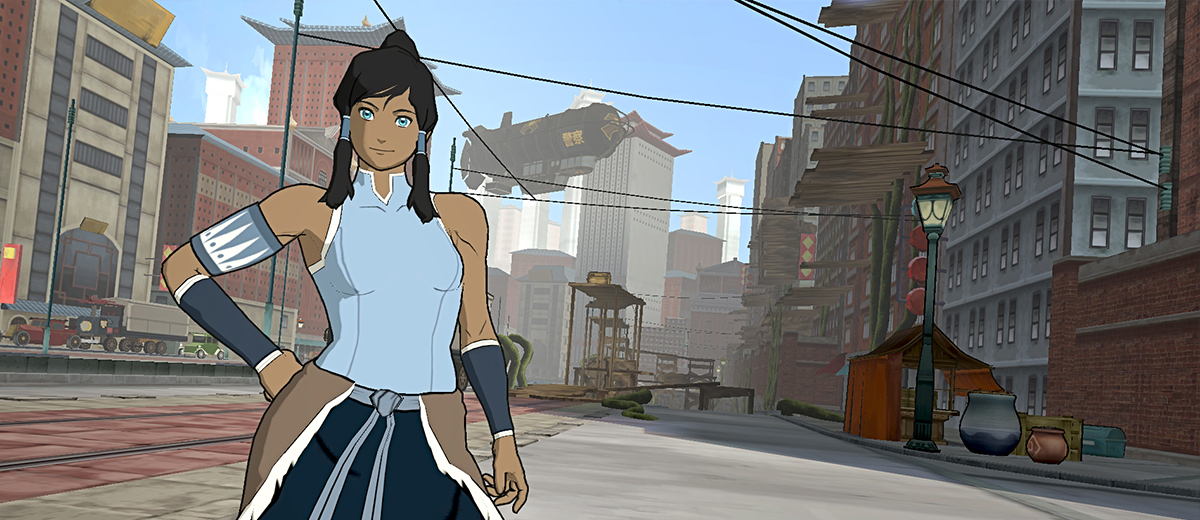
As you’d expect given how boring it sounds on paper, the story of The Legend of Korra is definitely not the focus here. It’s your stereotypical, Saturday morning cartoon type of storyline that only serves to push the action from locale to locale. There’s no surprises, there’s no thrills and there’s really nothing of note here. I’m almost willing to bet that everything in the series itself is more compelling than what’s on offer here.
 Korra’s presentation is designed to evoke the look and feel of the animated series that it’s based on. In that regard it’s pretty successful, right down to presenting some beautifully animated cutscenes between levels to set the scene and the story. The colours are solid and vibrant and the characters move as if they were in an animated television show – even the powers themselves, such as the water and fire all look great and the whole thing runs in an extremely fluid 60fps.
Korra’s presentation is designed to evoke the look and feel of the animated series that it’s based on. In that regard it’s pretty successful, right down to presenting some beautifully animated cutscenes between levels to set the scene and the story. The colours are solid and vibrant and the characters move as if they were in an animated television show – even the powers themselves, such as the water and fire all look great and the whole thing runs in an extremely fluid 60fps.
But it’s evident that a lot was sacrificed to achieve this fluidity – with many environments looking extremely bare. We’ve seen that Platinum Games can achieve 60fps with very detailed environments in their previous works, but for Korra everything just feels barren and rush. None of the environments feel alive or lived in, they just feel like static backgrounds to the action.
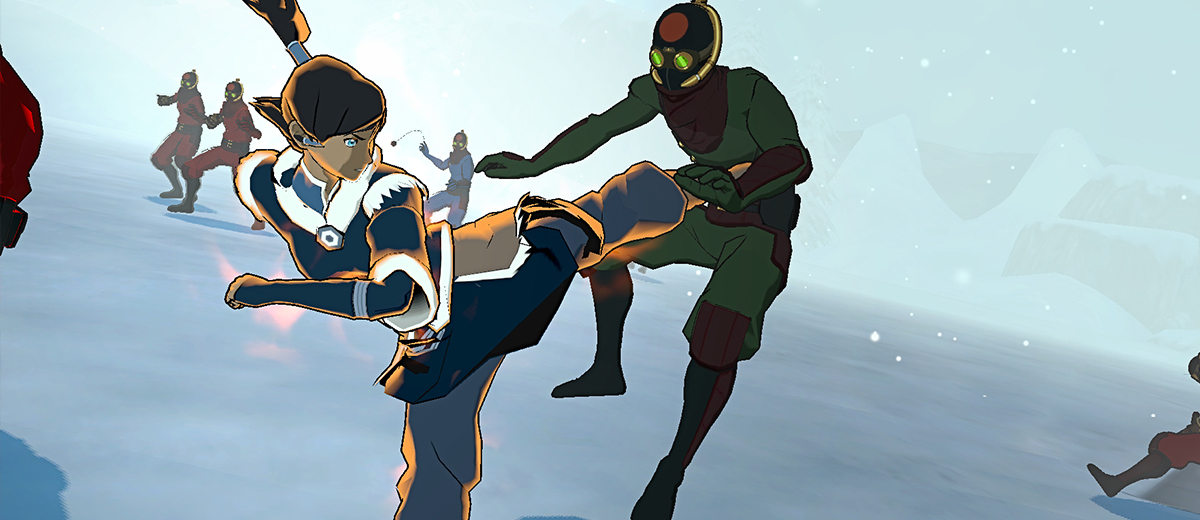
The voice work is similarly quite disappointing, although it is apparently making use of voice actors from the series itself. The performances are just dull and quite honestly, phoned in. The soundtrack, on the other hand, is great. Its action packed when it needs to be, it’s good at setting an air of ambience during calmer moments and appropriately melodramatic during the big (not to mention lacklustre) reveals during the story.
 Legend of Korra’s gameplay is what ultimately saves it from being an utter disaster, but you’d hope so given the developer’s pedigree. Korra is a pretty standard action game – you play as Korra herself and can switch between the elements at will (as you unlock them), with each element serving a specific purpose. Each of these elements can be charged to augment Korra’s attacks and deal more damage too – for example augmenting the Earth power sends out rocks with every punch that can be pulled onto enemies for extra damage.
Legend of Korra’s gameplay is what ultimately saves it from being an utter disaster, but you’d hope so given the developer’s pedigree. Korra is a pretty standard action game – you play as Korra herself and can switch between the elements at will (as you unlock them), with each element serving a specific purpose. Each of these elements can be charged to augment Korra’s attacks and deal more damage too – for example augmenting the Earth power sends out rocks with every punch that can be pulled onto enemies for extra damage.
There’s four elements to bend in the game. Earth is a heavy hitting, but slow element. Fire is blazingly fast but does less damage than the others. Wind strikes a balance between the two, but provides a great degree of crowd control with its whirling tornadoes. Water is more of an all-rounder. All the elements are well defined and distinct enough to serve a purpose in the game against certain enemies, although there is definitely a tendency to rely on one or two more than the others.
This can be seen as either a positive or a negative – on one hand the game doesn’t force you to use all your powers outside of the moment they’re introduced (ie. like DmC: Devil May Cry’s forced polarity system) but on the other it’s entirely possible you might undervalue one of the powers and not use them at all.
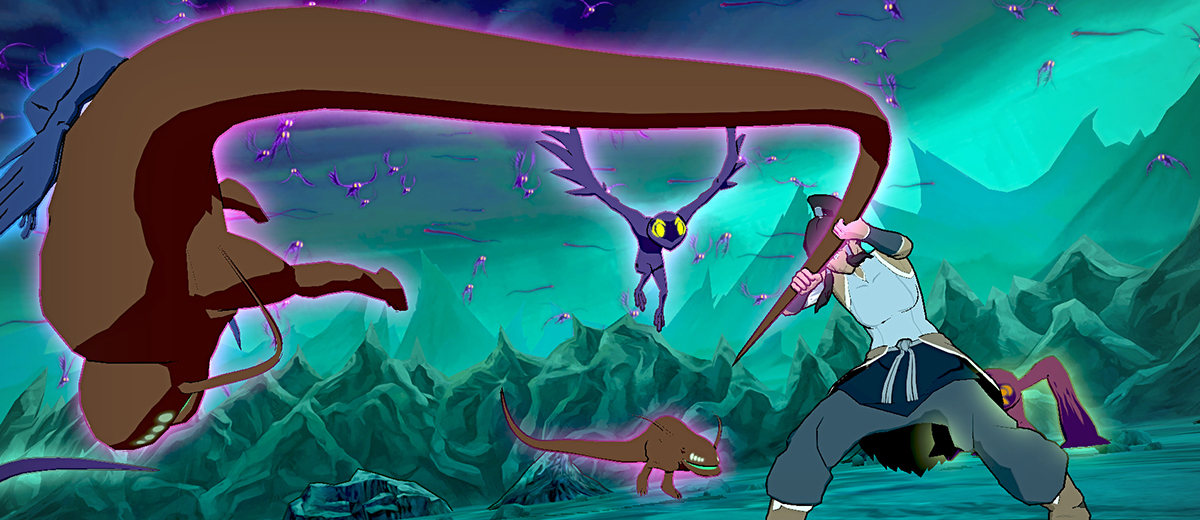
The combat itself is rather simplistic – Korra can use a light or a heavy attack to deal damage to enemies, as well as dodge or jump to get out of harm’s way. Counters can also be initiated by dodging at the right second, allowing Korra to retaliate for good damage. From time to time, an enemy may block Korra’s attacks and the game will enter a short QTE which provides her with an opportunity to defend herself.
It’s a simple system combat system, but it’s very easy for the game to somehow keep putting players said QTE sequence – either allowing the player to abuse the damage that can be dealt without worrying about other enemies attacking them or just plain frustrating the player who might want to fight naturally.
There are some other scenarios interspersed into the main storyline that break up the monotony of Korra’s simplistic combat system against the same five or so enemies. Firstly, there’s high speed traversal segments where players control Korra’s pet, Naga, in a Temple Run-esque gauntlet. Secondly, there’s Pro-Bending, which is like a simple game of attrition and a competitive, regulated bending competition. Both of these segments are playable without having to play the story; the former from the chapter select screen and the latter from a separate mode unlocked upon completion of the game.
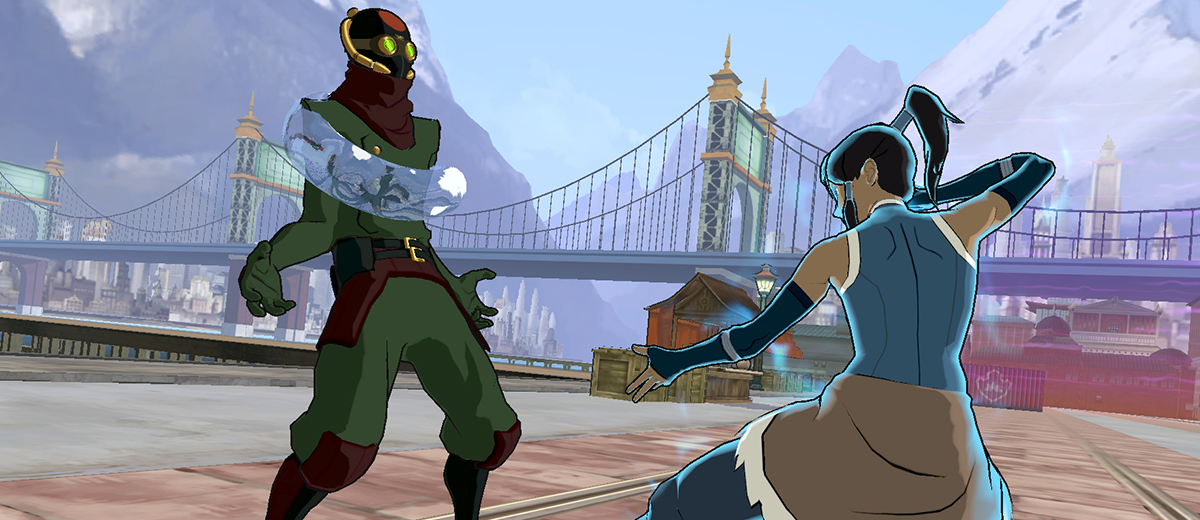
Between missions, Korra can visit a store to purchase items such as consumables that heal damage, new moves and abilities or other items that might buff her abilities at the detriment to others (ie. Double experience, but halved health). These should provide a nice air of strategy to the game but on your first play-through, the game is so easy that their effects and detriments are arguably negligible. It’s clear this system, as simple as it is, was designed for repeat play-throughs on higher difficulties.
And you’ll want to be replaying it too, since the entire experience could easily be over in five hours. It sounds short, and it really is, but Korra hopes that you’ll return to its higher difficulties to try to rank higher. Weirdly, the ranking system only really emphasises combo counts and time, so it’s possible to get a Platinum medal (theoretically) while still taking damage. We dabbled briefly in the unlockable “Extreme” mode, and it provided a challenge, but it should’ve been unlockable from the start for action game veterans.


